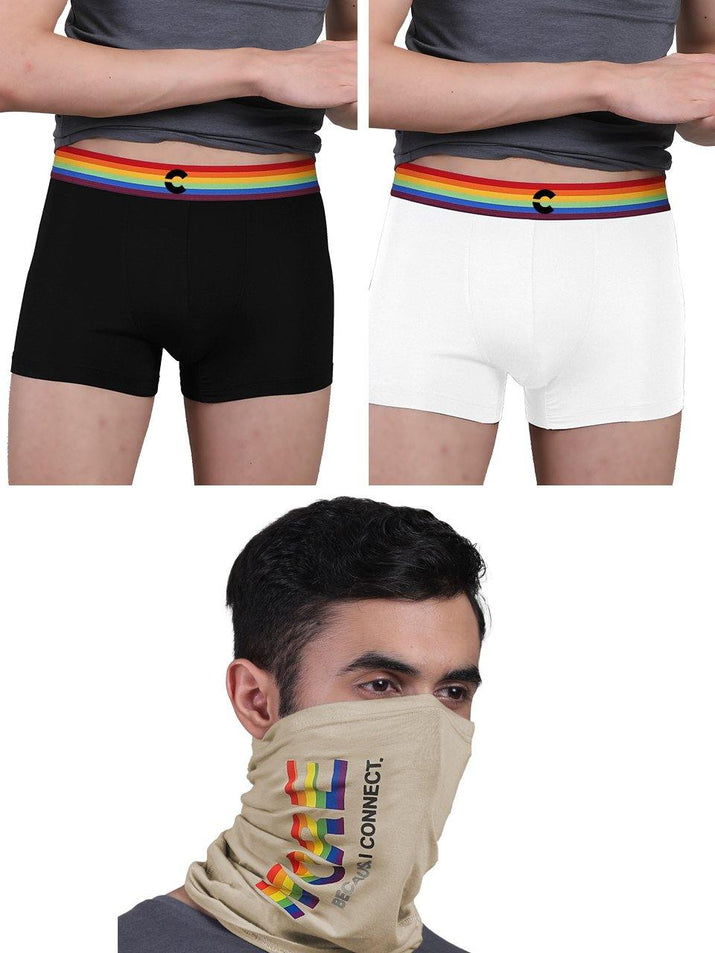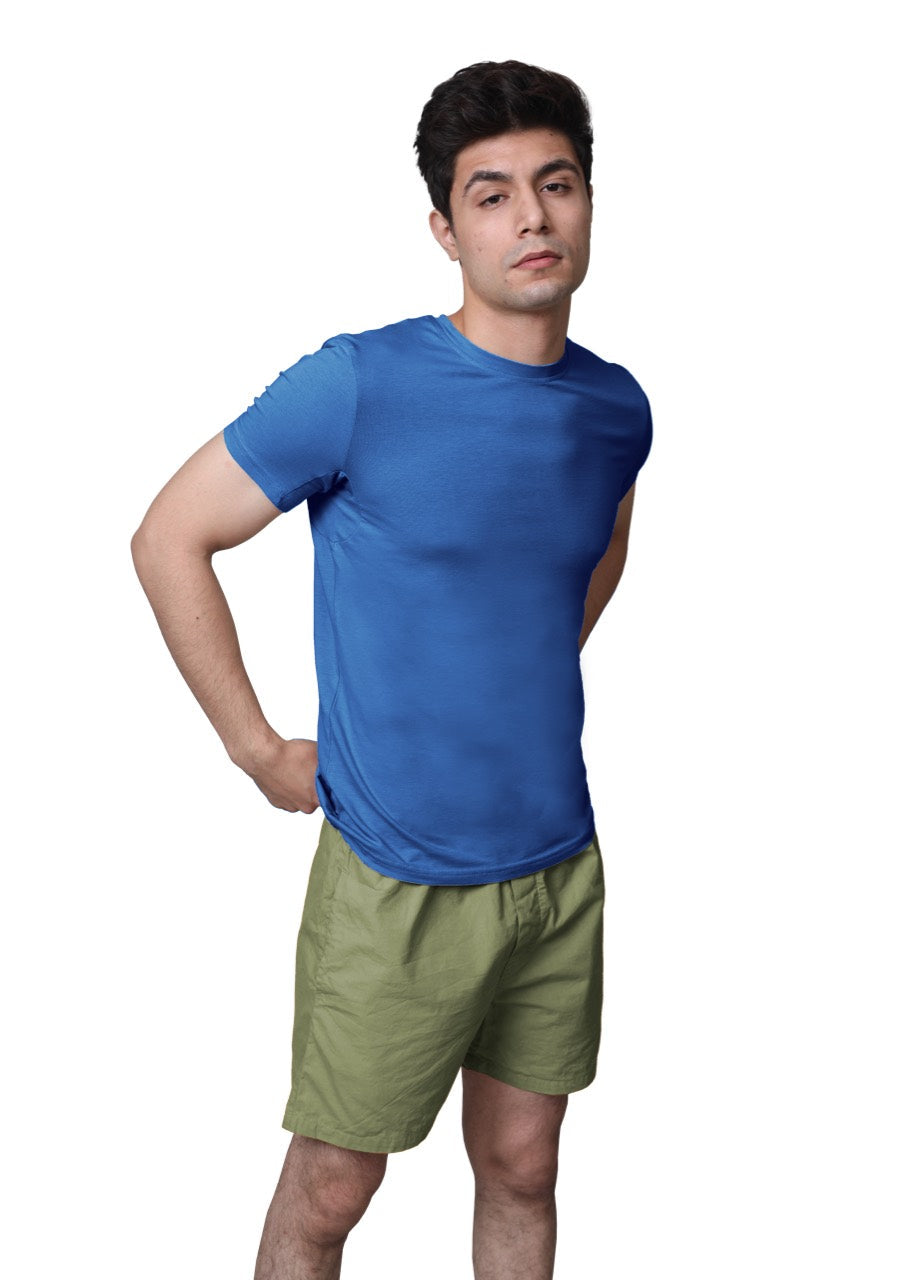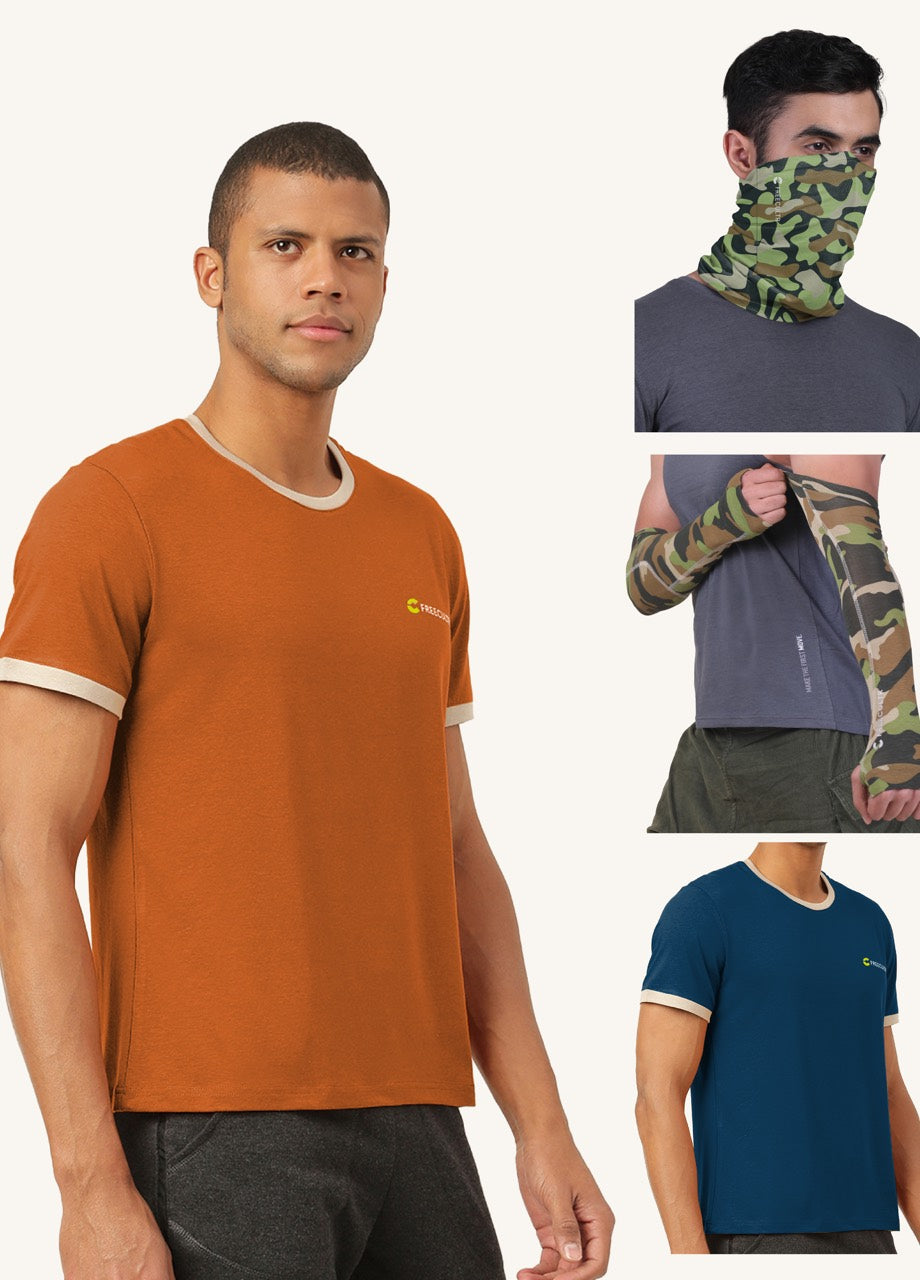The humble bandana has transcended its traditional cotton origins, evolving into a sophisticated piece of outdoor gear engineered for peak performance and protection. Modern technical bandanas, often crafted from advanced microfiber or polyester blends, now offer crucial features like UPF 50+ UV radiation blocking, rapid moisture-wicking to manage sweat during intense activity. effective dust filtration for trail running or cycling. This versatile accessory provides essential thermal regulation, adapting seamlessly to diverse environments, from shielding against harsh desert sun to offering a crucial layer of warmth in cooler conditions. Its seamless construction and antimicrobial treatments, a recent development, ensure comfort and hygiene, making the contemporary bandana an indispensable item for any serious outdoor enthusiast seeking enhanced functional benefits.

The Enduring Utility of the Bandana in Outdoor Environments
Often perceived as a simple piece of fabric, the bandana holds a surprisingly rich history and continues to serve as an indispensable tool for outdoor enthusiasts. Far from being merely a fashion accessory, this versatile square of cloth has evolved from a practical item for cowboys and pioneers into a high-performance piece of gear for modern adventurers. Its enduring appeal lies in its simplicity, adaptability. the myriad of ways it can enhance comfort, safety. performance in diverse outdoor settings. Understanding the full potential of a bandana goes beyond merely tying it around your neck; it involves appreciating its material science, protective capabilities. practical applications in various scenarios.
Material Science Behind Performance Bandanas
The effectiveness of a bandana in outdoor performance largely hinges on the materials it's made from. While traditional cotton bandanas remain popular for their comfort and breathability, modern advancements have introduced synthetic fabrics and blends that offer superior performance characteristics. Here's a look at common materials and their properties:
- Cotton A natural fiber known for its softness, breathability. absorbency. It's comfortable against the skin but can become heavy when wet, takes a long time to dry. loses its insulating properties when damp. Ideal for casual use or in dry, warm conditions where quick-drying isn't paramount.
- Polyester A synthetic fiber widely used in performance apparel. Polyester bandanas are excellent at wicking moisture away from the skin, are quick-drying. resistant to shrinking and stretching. They often offer good UV protection.
- Microfiber A type of polyester or nylon blend characterized by extremely fine fibers. Microfiber bandanas are exceptionally soft, lightweight, highly absorbent yet quick-drying. offer excellent moisture-wicking capabilities. They are often used in seamless tube bandanas or neck gaiters.
- Blends (e. g. , Polyester/Spandex) Combining different fibers can leverage the best qualities of each. A polyester/spandex blend, for instance, offers the moisture-wicking and quick-drying properties of polyester with the added stretch and flexibility of spandex, allowing for a more comfortable and adaptable fit.
- Treated Fabrics Some performance bandanas are treated with special finishes.
- UPF (Ultraviolet Protection Factor) Treatments Fabrics are treated to block harmful UV rays, offering significant sun protection. A high UPF rating (e. g. , UPF 30+, 50+) indicates excellent protection.
- Antimicrobial Treatments These treatments inhibit the growth of bacteria that cause odor, keeping the bandana fresh even during extended use.
- Insect Repellent Treatments Some bandanas are infused with permethrin, an insecticide that repels mosquitoes, ticks. other biting insects, adding a crucial layer of protection in buggy environments.
Here's a comparison of common bandana materials:
| Material | Moisture-Wicking | Drying Time | UV Protection | Comfort | Durability |
|---|---|---|---|---|---|
| Cotton | Low | Slow | Moderate | High (soft) | Moderate |
| Polyester | High | Fast | Good (often UPF-rated) | Moderate | High |
| Microfiber | Very High | Very Fast | Excellent (often UPF-rated) | Very High (soft) | Moderate |
| Blends (e. g. , Poly/Spandex) | High | Fast | Good (varies) | High (stretchy) | High |
Enhanced Protection: Beyond Sun and Sweat
The protective capabilities of a bandana extend far beyond simply managing sweat. Its versatility allows it to serve multiple functions crucial for safety and comfort in the outdoors.
- Sun Protection One of the most critical functions. A bandana, especially one with a high UPF rating, can protect vulnerable areas like the neck, ears. face from harmful ultraviolet radiation. Prolonged sun exposure can lead to sunburn, heatstroke. increase the risk of skin cancer. By strategically wrapping a bandana, you can create a barrier against direct sunlight, significantly reducing these risks.
- Dust, Wind. Debris Protection In arid environments, on dusty trails, or during activities like motorcycling or cycling, a bandana can be pulled up over the nose and mouth to act as a rudimentary filter against dust, sand. pollen. It also provides a barrier against strong winds, preventing chapped skin and irritation. Imagine being on a long hike through a dry, dusty canyon; having a bandana to cover your mouth and nose can make all the difference in preventing respiratory discomfort.
- Insect Repellency As mentioned, some bandanas are pre-treated with permethrin or can be treated at home. This provides an invisible shield against mosquitoes, ticks. other biting insects, which can be crucial in preventing insect-borne diseases like Lyme disease or West Nile virus.
- Minor Injury Protection & First Aid In a pinch, a clean bandana can be an invaluable first-aid tool.
- Compress/Bandage Folded and applied with pressure, it can help staunch bleeding from minor cuts or abrasions.
- Sling For a sprained wrist or arm, a bandana can be fashioned into a makeshift sling for support.
- Tourniquet (Last Resort) In severe, life-threatening bleeding situations where direct pressure is insufficient, a bandana can be used as a temporary tourniquet, though this should only be done by trained individuals and as a last resort.
- Padding Wrap it around blisters or hot spots on your feet before they become severe.
- Thermal Regulation A bandana can help regulate body temperature in both hot and cold conditions.
- Cooling In hot weather, soaking a bandana in water and wrapping it around your neck or head provides evaporative cooling, helping to lower core body temperature. This is a common tactic for marathon runners and desert hikers.
- Warmth In cooler weather, wearing a bandana as a neck gaiter or balaclava can provide an extra layer of insulation, trapping body heat and protecting exposed skin from cold wind.
Versatile Applications in Outdoor Activities
The adaptability of the bandana makes it a staple for a wide array of outdoor pursuits. Its compact size and multi-functional nature mean it often earns its place in a minimalist's pack.
- Hiking and Backpacking
- Sweat Management Worn as a headband or around the neck, it absorbs sweat, keeping it out of your eyes and off your skin, preventing chafing.
- Sun Protection Draped over the neck or head to shield from intense sun.
- Emergency Signal A brightly colored bandana can be tied to a tree branch or pack as a visual signal in an emergency.
- Pre-filter for Water While not a purification method, a bandana can be used to pre-filter larger particulates from murky water before using a proper water filter, extending the life of your filter.
- Cycling and Motorcycling
- Helmet Liner Worn under a helmet, a bandana can absorb sweat, keep hair out of the way. provide an extra layer of hygiene.
- Dust/Wind Mask Pulled up over the face to protect against road grime, windburn. insects.
- Running and Trail Running
- Sweatband Essential for keeping sweat from dripping into eyes.
- Hair Control Keeps longer hair or bangs out of the face.
- Cooling A wet bandana around the neck can provide significant relief during hot runs.
- Fishing and Boating
- Sun and Wind Protection Crucial for protecting exposed skin from reflective glare off the water and persistent winds.
- Wipe Cloth Handy for drying hands or cleaning gear.
- Camping and Survival
- Pot Holder Folded multiple times, it can be used to handle hot cookware.
- Cordage Torn into strips, a bandana can be used for temporary lashing or repairs.
- Small Game Snare (Last Resort) In true survival scenarios, pieces of a bandana could be improvised for small snares.
- Tinder A dry cotton bandana can be torn into fine strips and used as tinder to help start a fire.
A personal anecdote highlights the bandana's utility: "During a particularly grueling multi-day backpacking trip through the desert, my synthetic bandana became my most valuable piece of gear. I used it as a sun shield for my neck during the day, soaked it in precious water at our rest stops to cool down. then, when the wind picked up unexpectedly, I pulled it up over my face to protect against blowing sand. It was a simple item. its versatility saved me from significant discomfort and potential heat stress." This real-world application underscores why a bandana is often considered a minimalist's multi-tool.
Choosing the Right Bandana for Your Needs
Selecting the ideal bandana depends on your primary intended use and the conditions you expect to encounter. Consider the following factors:
- Material
- For hot, humid, or active conditions where quick-drying and moisture-wicking are crucial, opt for polyester, microfiber, or performance blends.
- For casual use or cooler, drier conditions where absorbency and softness are prioritized, traditional cotton might suffice.
- Size and Shape
- Traditional square bandanas (typically 22x22 inches) offer maximum versatility for folding and tying in various ways.
- Seamless tube bandanas (often called neck gaiters or "buffs") are excellent for covering the neck and face, offering a snug fit without knots. They are particularly popular for activities like cycling, running. skiing.
- Special Features
- UPF Rating If sun protection is a primary concern, look for bandanas with a stated UPF rating of 30+ or 50+.
- Antimicrobial Properties For extended trips or multi-day use without washing, an antimicrobial bandana will stay fresher longer.
- Insect Repellent If you're heading into areas with high insect populations, a permethrin-treated bandana can be a game-changer.
- Color and Pattern While often aesthetic, lighter colors can reflect more sunlight. bright colors can serve as a signaling device in emergencies.
Techniques for Wearing and Maximizing Bandana Utility
The true power of a bandana lies in its adaptability. Mastering various ways to wear it unlocks its full potential:
- The Classic Neck Wrap Folded into a triangle or a long strip and tied loosely around the neck. Provides sun protection for the neck, absorbs sweat. offers a bit of warmth in cool conditions.
- Headband/Sweatband Folded into a strip and tied around the forehead. Keeps sweat out of eyes and holds hair back. Effective for running, hiking, or any high-exertion activity.
- Head Wrap/Durag Style Covers the entire top of the head. Offers excellent sun protection for the scalp and can help regulate temperature.
- Face Mask/Balaclava (using a tube bandana) Pulled up over the nose and mouth, or even the entire head leaving only eyes exposed. Essential for protection against dust, wind, cold, or sun. This is particularly effective with seamless tube bandanas that offer a snug fit.
- Bandana as a Cap/Beanie Can be folded and tied to form a rudimentary cap, offering shade and light warmth.
- Wrist Wrap Tied around the wrist to wipe sweat from the face or to keep hands clean.
- Emergency Sling/Splint Tie As detailed previously, a bandana can provide temporary support for an injured limb.
Learning these simple techniques transforms a basic square of fabric into a versatile tool. Practice makes perfect, so experiment with different folds and ties to find what works best for your specific needs and comfort.
Conclusion
Ultimately, the men's bandana isn't merely a fleeting fashion accessory; it's an indispensable piece of outdoor gear, offering both enhanced protection and practical performance. Consider it your compact, versatile shield against the elements, much like how modern outdoor enthusiasts are embracing multi-functional items for minimalist adventures. I personally never embark on a sunny hike or a long run without one, often using it as a sweatband or neck gaiter to ward off the sun's harsh rays – it truly saved my neck during that unexpected heatwave last summer, preventing a nasty burn. My tip for you: always stash one in your daypack or even your pocket. It’s perfect for managing sweat during an intense workout or providing crucial sun protection for your scalp or neck, adapting seamlessly to current outdoor trends that prioritize utility and adaptability. Don't underestimate its simple power; embrace the bandana and elevate your outdoor experience with this unassuming yet mighty tool, ready for whatever adventure awaits.More Articles
Bandana – Transform Your Look & Add a Pop of ColorMen's Tank Top – Athletic Freedom & Cool Comfort
Men's T-Shirt – Classic Style & Ultimate Softness
Men's Inner Wear – Foundation for All-Day Comfort & Support
FAQs
What makes this men's bandana different from others?
This bandana is specifically engineered for outdoor performance and enhanced protection. It's made with advanced fabrics that offer superior breathability, moisture-wicking. a barrier against environmental elements, unlike typical fashion bandanas.
How does it protect me during outdoor activities?
It provides crucial protection against harmful UV rays, helps shield your face and neck from windburn. keeps dust, dirt, or insects from impacting your comfort and safety. It's a versatile shield for any adventure.
Is it comfortable to wear for long periods or during intense activity?
Absolutely! It features a lightweight, stretchy. highly breathable fabric that actively wicks away sweat, helping to keep you cool and dry. This design ensures maximum comfort, even during strenuous exercise or extended wear.
Can I wear it in different ways?
Yes, its seamless, tubular design allows for incredible versatility. You can wear it as a neck gaiter, face mask, headband, balaclava, wristband, or even a traditional bandana, adapting to your specific needs and the conditions.
What kind of performance features does it have?
Beyond protection, it boasts quick-drying properties, excellent stretch for a secure fit without restricting movement. enhanced airflow to prevent overheating. It's built to support your active lifestyle.
How do I care for my outdoor performance bandana?
It's super easy to clean. Simply machine wash it with like colors on a gentle cycle and tumble dry on low. It's durable enough to withstand frequent washing and maintain its performance features.
Will it stay in place during activities like running or cycling?
Yes, thanks to its engineered fit and stretchy material, this bandana is designed to stay securely in place during high-movement activities. You won't have to constantly adjust it, allowing you to focus on your performance.






